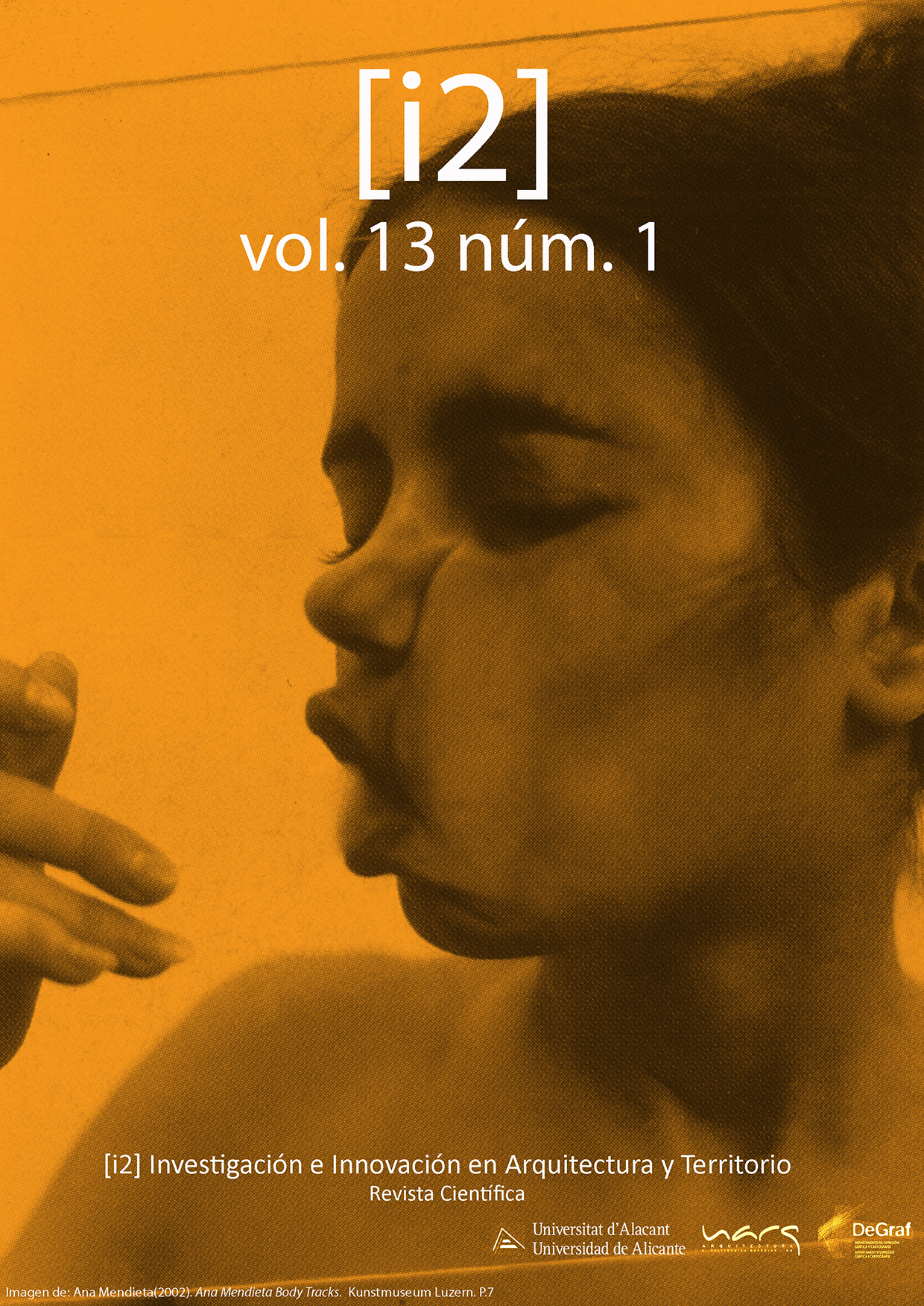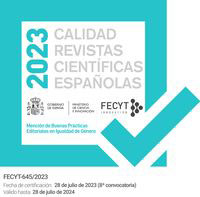“De Straat: Vorm Van Samenleven”, una exposición pionera sobre el diseño de la calle
DOI:
https://doi.org/10.14198/i2.26815Palabras clave:
diseño de calles, exposición de arquitectura, Jean Leering, Tjeerd Deelstra, modelo holandés, van Abbemuseum, ecología urbana, woonerf, espacios compartidos, espacio de convivencia, urbanismo, arquitectura, exposición, de straat, museografía, Team X, calleResumen
En 1972, la exposición De Straat: Vorm Van Samenleven (La calle: formas de convivencia) tuvo lugar en el Van Abbemuseum de Eindhoven. Fue la primera vez que se exhibió la calle como objeto arquitectónico con énfasis en ecología urbana y sociedad. El evento ha sido investigado en profundidad en estudios sobre arte, y resulta oportuno abordarlo desde las disciplinas de la arquitectura y el urbanismo. Cincuenta años después, las ideas presentadas en la exposición aún parecen pertinentes y un referente para los debates actuales. El estudio de este acontecimiento plantea una serie de preguntas: ¿Cuáles fueron las implicaciones de llevar a un museo tales cuestiones urbanas? ¿Qué podemos aprender de las exposiciones sobre diseño de calles, y de De Straat en particular, en su impacto en la contemporaneidad? A través de una revisión de la literatura del caso, un análisis de la museografía y del catálogo de la exposición, y una entrevista semiestructurada al comisario y arquitecto Tjeerd Deelstra, este artículo investiga la historia y las aportaciones, centrándose en sus fuentes teóricas con el objetivo de reconocer su repercusión en la arquitectura. Al observar el caso, se infiere que De Straat fue tanto una exposición innovadora en su realización como un hito en la construcción de conceptos como el woonerf y el espacio compartido. De Straat definió nuevas maneras de exponer la arquitectura, pero sobre todo, abrió discusiones y detonó preguntas que desafiaron los principios de la ciudad, siempre en proceso de transformación.
Citas
Alonzo, É. (2018). L'Architecture de la voie. Histoire et Théories. Parenthèses Editions.
Aquilué Junyent, I., & Roca Blanch, E. (2019). Bijlmermeer: cambio e hibidración en la ciudad del futuro. ZARCH, 12. https://doi.org/10.26754/ojs_zarch/zarch.2019123388
Bourdieu, P. (2010). El Sentido Social Del Gusto. FCE.
Buchanan, C. (1963). Traffic in Towns: A study of the long term problems of traffic in urban areas. Routledge.
Contreras Guerrero, A. (2014). El comisario como artista. De cuando se cuestionan sus límites. Ucoarte. Revista de Teoría e Historia del Arte. https://doi.org/10.21071/ucoarte.v3i0.9498
De Jong, T., De Vries, G., Tjallingii, S., Duijvestein, K., & Sijomns, D. (2015). The theory of Chris van Leeuwen: Some important elements. Delft University of Technology.
Deelstra, T., Panhuysen, P., & Boersma, P. (1981). Zorg voor de omgeving: Over de betekenis van vormgeving. Staatsuitgeverij.
Ernst, D., Esche, C., & Erbslöh, U. (2016). The art museum as lab to re-calibrate values towards sustainable development. Journal of Cleaner Production, 135, 1446-1460. https://doi.org/10.1016/j.jclepro.2016.06.196
Figueiredo, S. M. (2016). The Rules of Engagement: Jean Leering's Architecture Exhibitions (1964-73). 69th Annual International Conference of the Society of Architectural Historians.
Franssen, D. (2006). Museum in ¿Motion? Conference Proceedings: Boekpresentatie. http://libraryblog.vanabbe.nl/livingarchive/museum-in-motion/
Gehl, J. (1971). Life Between Buildings: Using Public Space. Island Press.
Goudappel, H., & Perlot, J. A. (1965). Veerker en stad: Problematiek en ordening van het verkeer in middelgrote en kleine gemeenten. VUGA.
Greenberg, R., Ferguson, B. W., & Nairne, S. (1996). Thinking about Exhibitions. Routledge.
Gregg, K. (2019). Conceptualizing the pedestrian mall in post-war North America and understanding its transatlantic transfer through the work and influence of Victor Gruen. Planning Perspectives, 34(4), 551-577. https://doi.org/10.1080/02665433.2018.1437555
Hitzer, H. (1971). Die Strasse. Callwey.
Jacobs, J. (2011). Muerte y vida de las grandes ciudades. Capitán Swing.
Kaal, H. (2011). A conceptual history of livability. City, 15(5), 532-547. https://doi.org/10.1080/13604813.2011.595094
Kahn, L. I. (1971). The room, the street and human agreement. AIA Journal, September.
Kempers, P. (2015). «Het gaat om heel eenvoudige dingen»: Jean Leering en de kunst. (Se trata de cosas muy simples: Jean Leering y el arte). Valiz.
Land, R., Jongkind, E., Lammerts, A., & Rozenboom, A. (1999). Wegen in beweging : de historie van Goudappel Coffeng BV, Adviseurs verkeer en vervoer te Deventer (1963-1999). Goudappel Coffeng.
Leering, J., Deelstra, T., Van Toorn, J., & Bremer, J. (1971). Straat: Een analyse van het gebied: waar intermenselijke relaties gestalte krijgen in het orgaanisme van de samenleving. [Archive material]. Van Abbemuseum.
Monheim, R. (1986). Pedestrianization in German Towns: A Process of Continual Development. Built Environment.
Muhlrad, N. (2007). A Short History of Pedestrian Safety Policies in Western Europe.
Mumford, L. (1963). The Highway and the City. The New American Library.
Ober, J. F. W. (1972). The Street, a form of community life. [Press release]. Van Abbemuseum.
Obrist, H. U. (2011). A Brief History of Curating (L. Bovier & X. Dourox, Eds.). JRP | Ringier.
Ortega-Martínez, D. (2023). Interview with Tjeerd Deelstra.
Panhuysen, P. (1971). Wilgenroosstraat. www.paulpanhuysen.nl.
Parker, A. A. (2000). The Dutch model for making walking and cycling safer. Road Safety Research, Policing and Education.
Peters, P. (1981). La ciudad peatonal. Gustavo Gili.
Porto, M., & Pozueta, J. (2008). Los espacios compartidos («Shared Space»). http://www.aq.upm.es/Departamentos/Urbanismo/public/ciu/num/num.html
Rooijakkers, G. W. J. (2005). Omwegen in de Geschiedschrijving. De straat als historische categorie. Noordbrabants Historisch Nieuwblad, 19, 1-6.
Royes, M., Ramoneda, J., & Garcia-Espuche, A. (1999). La Reconquista de Europa. 1980-1999 Espacio Público Urbano. CCCB.
Sadik-Khan, J., Lydon, M., & Garcia, A. (2015). Tactical Urbanism. Short-term Action for Long-term Change. Island Press.
Sanz-Alduán, A. (1994). Calmar el tráfico, domesticar el automóvil: Posibilidades del diseño urbano. Ciudad Y Territorio Estudios Territoriales.
Southworth, M., & Ben-Joseph, E. (2003). Streets and the Shaping of Towns and Cities. Island Press.
Tate Modern. (1956). Photograph showing Nigel Henderson, Eduardo Paolozzi, Alice and Peter Smithson, seated in an unidentified street. www.tate.org.uk.
Van Abbemuseum. (1972a). De straat: vorm van samenleven [Exhibition Catalogue] (J. LEERING, T. DEELSTRA, J. VAN TOORN, & J. BREMER, Eds.).
Van Abbemuseum. (1972b). The Street: A form of community life. [Press release].
Van Abbemuseum. (2024). Mediabank Van Abbemuseum. mediabank.vanabbemuseum.nl.
Van Bueren, E. M., & Boonstra, C. (2001). Sustainable Design in the Netherlands. En B Edwards (Ed.), Green Architecture: An International Comparison (pp. 76-81). John Wiley & Sons.
Van den Heuvel, D. (2018). Jaap Bakema and the open society. Archis Publishers.
Van-Gameren, D., & Mooij, H. (2010). Erfenissen van het woonerf. Dash, 3, 18-29.
Venturi, R., Scott Brown, D., & Izenour, S. (1976). Signs of Life: Symbols in the American City. The Smithsonian Institution.
Verlaan, T. (2021). Mobilization of the Masses: Dutch Planners, Local Politics, and the Threat of the Motor Age 1960-1980. Journal of Urban History, 47(1), 136-156. https://doi.org/10.1177/0096144219872767
Descargas
Estadísticas
Publicado
Cómo citar
Número
Sección
Licencia
Derechos de autor 2025 David Ortega-Martinez

Esta obra está bajo una licencia internacional Creative Commons Atribución-NoComercial-CompartirIgual 4.0.







